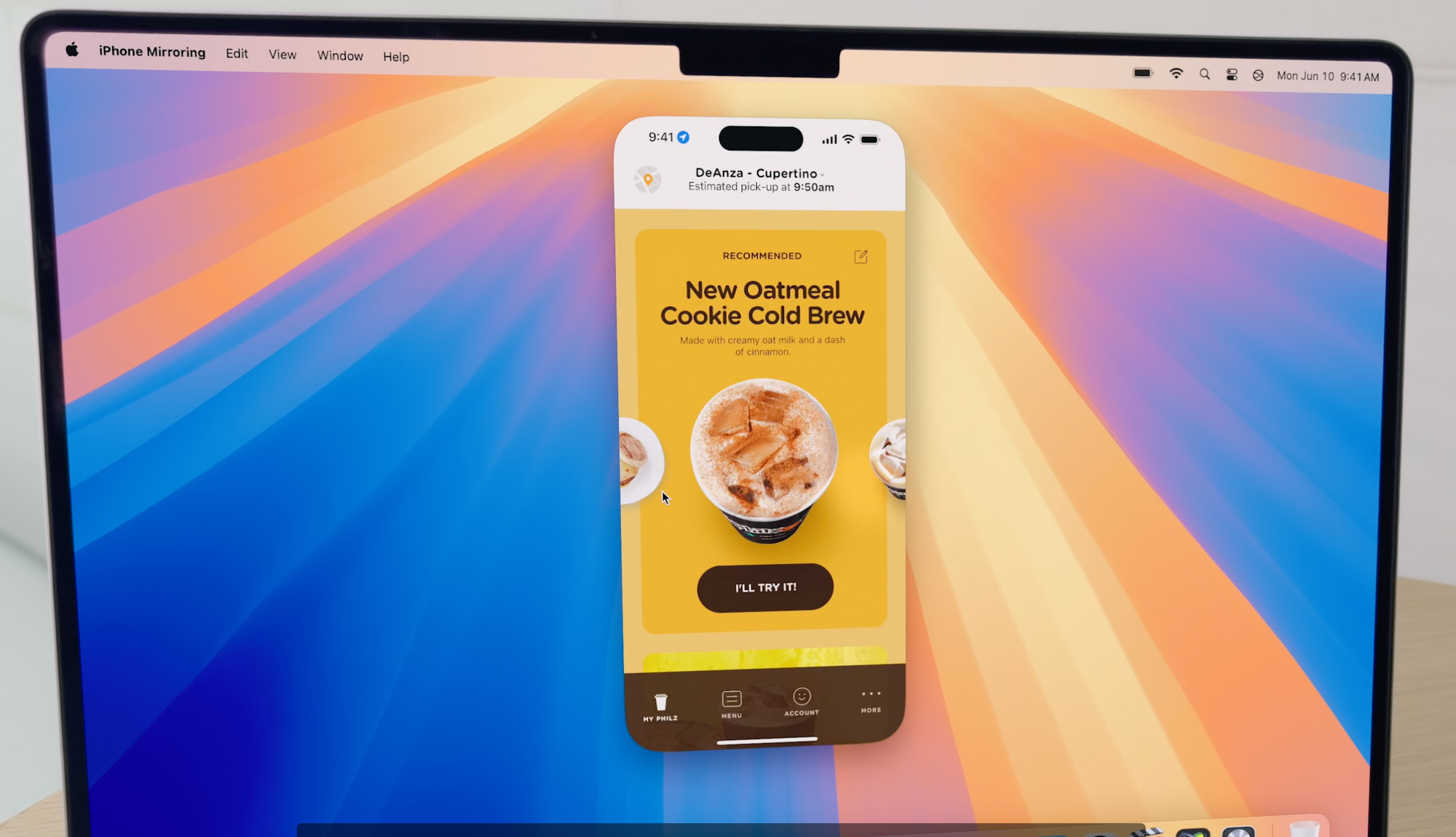Top 5 Exciting Features From WWDC24
Apple holds an event called WWDC, or Worldwide Developer's Conference, every year. This week, Apple showcased all the new software features for all platforms. Over 100+ videos teach other developers about new and upcoming features, and they are available on the Apple Developer's website.
I highly recommend you watch the videos on the topics most exciting and follow along with the code challenges.
In this article, I'll review the top 5 new features announced during the Keynote and Platforms State of the Union.
5: iPhone Mirroring on MacOS Sequoia
Even though data could be quickly passed through different Apple devices, you were very limited in the interactions you could have on your iPhone when you connected it to a Mac. Any interaction could only be done on the device, and you needed to use QuickTime or other apps to see what was happening seamlessly.
Now, you can completely control your iPhone from your Mac wirelessly.
You will also be able to use your iPhone apps and interact with the iPhone using your keyboard and mouse.
Your iPhone will be locked if anyone picks it up.

4: Xcode 16
Xcode is an essential tool for an iOS Developer. On Xcode 16, Apple improved code completion. It can now predict the developer's code, using project symbols to customize suggestions. It also uses comments to better predict the code and works offline.
Thread debugging was upgraded, and now you can see the stack frames together.
The graphs for the time profiler on Instruments also improved. It now creates a flame graph that correlates to the resources that each element uses.
Finally, Swift Assistant is Apple's code assistant and helps programming efficiency through prompts, Swift Assistant.
It will only be available for Macs with an Apple Silicon Chip and MacOS Sequoia.
3: Swift 6
Swift is Apple's official programming language, and 2024 marks ten years for the language.
Swift 6 has many updates, such as the possibility of compiling using Visual Studio Code. It will also improve support for Windows and more Linux distros, such as Debian and Fedora.
Apple is also moving towards open-source development, so a new GitHub organization includes projects like the Swift compiler and foundation projects that anyone can improve.
Finally, there has also been a significant improvement in data race safety. A data race occurs when different parts of the code try to modify and access the same data simultaneously. Swift 6 aims to eliminate these bugs by diagnosing them at compile time.

2: Swift Testing
For Swift's 10th anniversary, Apple introduced a new testing framework called Swift Testing. Previously, developers used the XCTest library to assert expectations.
Now, with this new framework, writing tests will be easier since it's more expressive, facilitates cross-platform integration, and was developed as an open-source package.
With macros like @Test and #expect, you can quickly adapt your tests to this new framework. Although there is a lot to learn, it must be fun to test a new approach to automated tests.

Swift testing also allows you to group tests by tags, which will enable you to run tests selectively across your test suite. You can easily parameterize tests so they can be reused multiple times. Using XCode 16, you can see the test navigator organize your tests by tags.
Finally, the source editor will also have a rich inline presentation to help diagnose what went wrong when a test fails.

1: Apple Intelligence
It has long been rumored that this WWDC would focus heavily on new AI features for all platforms.
iOS 18, iPadOS 18, MacOS Sequoia, and VisionOS 2 will feature these new generative AI models to make users' lives easier. Deep integration can now prioritize and minimize notifications based on context.
There is also a new way to generate images. It can use your photos on your iPhone to get context and create the best images.
Also, AI will be able to take actions on your app, like playing a podcast or sending a message, and it will use personal context to create a more personalized experience.
Siri also received significant improvements and will benefit from this AI upgrade. It will have on-screen awareness. This means that Siri can read information on the screen to perform actions, like sending a message to a specific person, and it can also perform app actions on behalf of the user. This is called App Intents, and Apple will also provide an API to improve the integration with Siri with your app.
AI will only be available on Apple Silicon Processors: A17, M1, M2, M3, and M4.

Conclusion
This time of year is also inspiring for Apple Platform developers. There are many new exciting features for the following software generation.
It's also important to note that a lot of the new features can be beneficial for developers to implement on their apps to facilitate the integration of their apps.
I hope you enjoyed this article and plan to create more articles about different topics from WWDC24.
I'm delighted to be able to provide information to everyone for free, so if you enjoyed this, please consider supporting my work by connecting with me on LinkedIn, GitHub, and X. ✨
